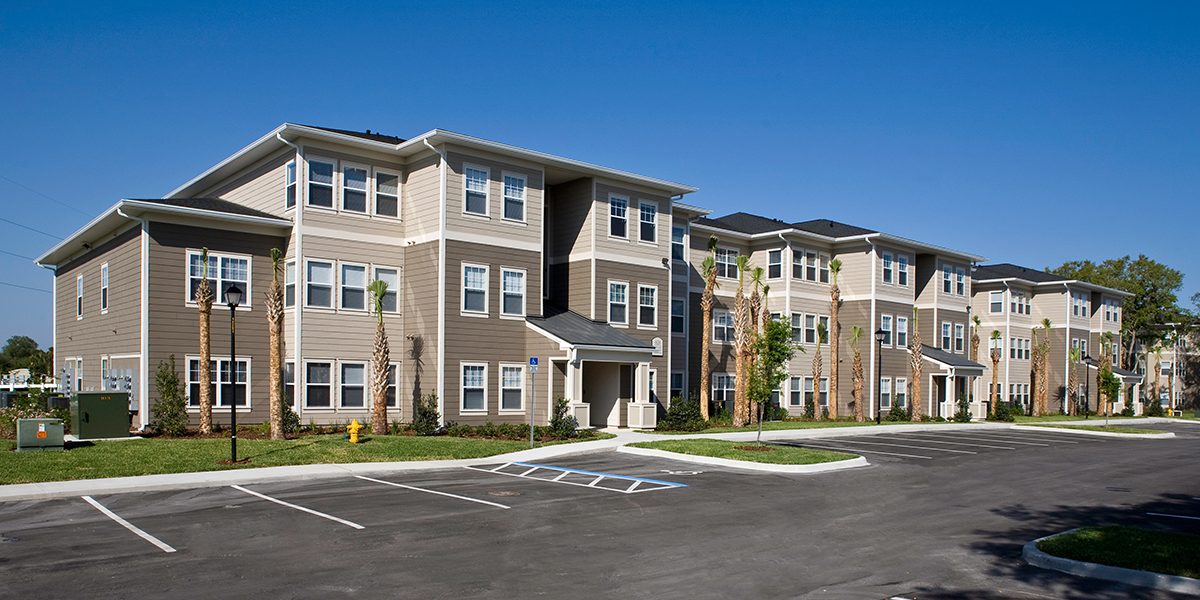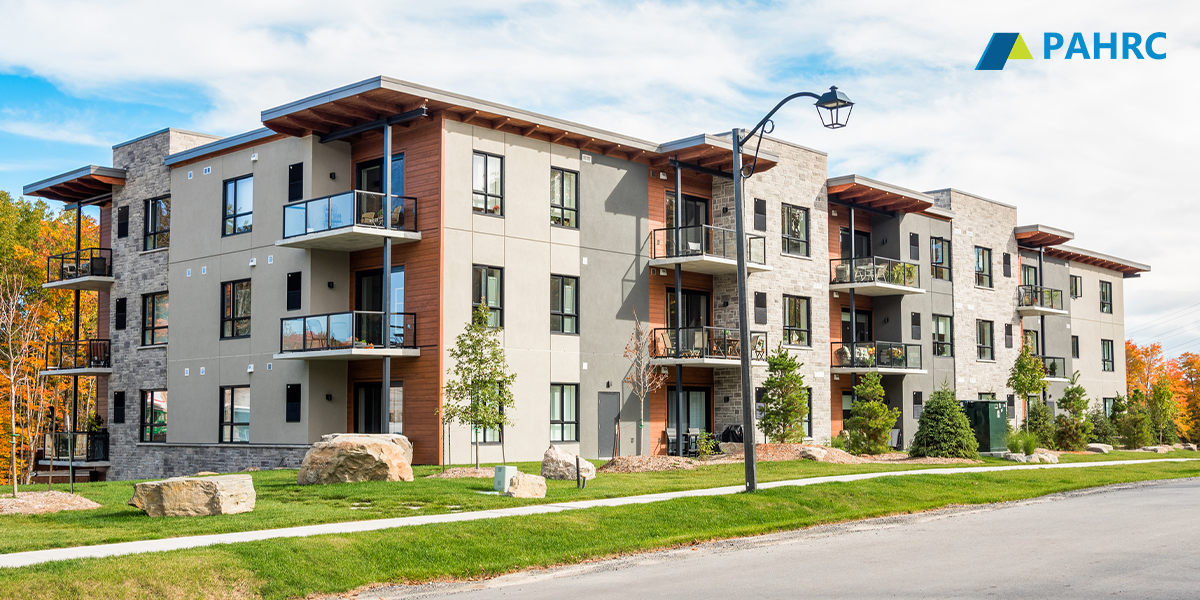Across the region, housing authorities are tackling ambitious projects that not only preserve affordable housing but also strengthen entire communities. These efforts highlight the critical role housing authorities play in addressing long-term challenges like sustainability, accessibility, and resident opportunity.
In NERC NAHRO’s Community Spotlight series, Kelly McElwain, manager of research and industry intelligence at the Public and Affordable Housing Research Corporation (PAHRC), shares how Worcester Housing Authority is bringing this vision to life. You can read the full story on NERC NAHRO's Community Spotlight page or below.
Expanding the Toolbox to Build and Preserve Affordable Housing in Worcester, MA
Worcester Housing Authority (WHA), New England’s second largest housing authority, manages 3,000 housing units and oversees more than 4,000 state and federal Section vouchers. WHA is committed to revitalizing its communities, enhancing residents’ quality of life, and creating an environment that encourages families to achieve self-sufficiency. To advance this mission, WHA is modernizing its properties, building new affordable homes, and fostering strong community connections.
A key example of this work is WHA’s comprehensive redevelopment of Curtis Apartments, which brings together local, state, and federal programs to ensure long-term affordability and sustainability for both the property and the neighborhood. Central to this redevelopment is the creation of a new Economic Opportunity Center (EOC).
The EOC will serve as a hub for workforce development, job training, digital literacy, and resident services, helping families connect to career pathways and economic mobility resources. By housing WHA staff offices, a Worcester Public Library branch, and community programming under one roof, the EOC will anchor a robust support network that empowers residents to achieve independence and long-term success.
Revitalization and Expansion of Curtis Apartments
Located in Worcester’s Great Brook Valley neighborhood, Curtis Apartments is a 75-year-old public housing complex initially funded by the state. In partnership with Trinity Financial, WHA is transforming this aging property by fully redeveloping all 372 affordable units and adding 150 new ones. The development also improves livability by adding green spaces and an Economic Opportunity Center.
The redevelopment of Curtis Apartments aims to improve:
- Promoting self-sufficiency by building an Economic Opportunity Center to help residents succeed in their educational pursuits and improve financial literacy. The center will provide residents with academic advice, assistance on college applications, job training, supportive services, and on-site access to a branch of the Worcester library.
- Unit quality by modernizing the interior and exterior of buildings across the property.
- Accessibility by building roughly 50 wheelchair-accessible units, installing elevators in each building, ensuring public spaces across the property are accessible, and expanding access to public transit service, bike racks, and parking.
- Energy efficiency and cost savings by rebuilding the property to stretch code standards to reduce energy costs. The redevelopment will use modern construction methods and materials to significantly reduce energy consumption. Methods and materials include high-performance insulation, airtight building envelopes, and ENERGY STAR-certified appliances and lighting throughout the development. WHA is also incorporating high-efficiency HVAC systems, such as heat pumps and energy-saving boilers, to reduce residents’ greenhouse gas emissions and utility costs. In addition, water-saving fixtures and enhanced ventilation systems will improve indoor air quality and conserve natural resources.
- Resiliency from heat, storm intensity, and localized flooding by installing a new sprinkler system, durable building materials, landscape improvements to mitigate heat island effects, and modern stormwater management infrastructure that reduces pavement, increases pervious green space, and redirects runoff away from buildings. WHA is also improving walkability and public transit access at Curtis Apartments, which can contribute to community resilience by reducing vehicle dependency and supporting residents' mobility during extreme weather events.
- Access to green space by creating a park, greenway, town square, and walking path. The park will feature native, drought-tolerant plants and deciduous trees to provide shade.
- Community cohesion by implementing Complete Streets principles to streamline how cars, bikes, and people of all abilities navigate the development and promote resident connection by expanding access to public spaces.
- Connections to residents by relocating WHA management staff on site.
- Access to affordable housing by building 150 new units affordable to households across a broader range of incomes and household sizes.
Before |
After |
|
|
|
Source: WHA and Trinity Financial

Source: WHA and Trinity Financial
Sustainability Features
WHA is seeking a Phius Passive House certification on the second phase of Curtis Apartment’s redevelopment to improve indoor air quality, building durability, resilience, energy use. Passive House certification incorporates principles from the Environmental Protection Agency’s (EPA) ENERGY STAR Multifamily New Construction, the Department of Energy’s (DOH) Zero Energy Ready Homes (ZERH), and the EPA’s Indoor airPLUS programs.
WHA plans to include the following features in the second phase of Curtis Apartments to improve sustainability:

Financial Tools
WHA will complete the Curtis Apartments redevelopment in four phases over approximately eight years. WHA broke ground on the first phase in 2024, supported by a creative combination of funding tools and programs:
- An Innovations Grant from the Commonwealth of Massachusetts Executive Office of Housing & Livable Communities was essential to help WHA and Trinity Financial develop the revitalization plan and secure interest from funders. Innovations Grants are available to help housing authorities in Massachusetts preserve state-funded public housing.
- Restore Rebuild enabled WHA to replace 29 state-funded public housing units with Project-Based Vouchers (PBV). Restore Rebuild, formerly known as Faircloth-to-RAD, allows housing authorities to replace public housing units that were demolished or sold by providing operating subsidies that can be used to acquire funding to rebuild these units.
- PBVs enabled WHA to replace an additional 61 state-funded public housing units with vouchers from their regular voucher program.
- Rent augmentation helped WHA supplement the rents for units Restore Rebuild PBV units with the higher rents generated from WHA’s regular voucher program to make the deal pencil out. WHA was the first housing authority in the country to augment rents for Restore Rebuild units using this new flexibility introduced in 2023, which ensured the redevelopment was financially viable.
- Low Income Housing Tax Credits equipped WHA to build an additional 39 new affordable units.
In total, Phase One was supported by funding from 14 programs, including EOHLC’s Moving to Work Funds, state LIHTCs, EOHLC subsidies, MassWorks, MassHousing, and the City of Worcester.
Keys to Success
Plan Early
With a 99.7% occupancy rate, relocating residents for the renovation of Curtis Apartments is a complex challenge. WHA partnered with Housing Opportunities Unlimited to manage tenant relocation. Providing ample notice and time is essential to reduce disruption for families.
Leverage a Wide Range of Funding Sources
A mix of local, state, and federal programs made it possible to begin redesigning Curtis Apartments into a more modern, resilient, and livable community while maintaining affordability for the lowest-income households. Continued investment in these programs is vital for preserving public housing stock.
Maintain Long-term Affordability
WHA negotiated a strong right of first refusal with Trinity Financial, ensuring the agency has the option to repurchase the property after 15 years and maintain its affordability for the long term.
Explore Your Assets
WHA leveraged its portfolio to identify opportunities to expand access to affordable homes and neighborhood amenities while also promoting resident self-sufficiency. The WHA believes its greatest asset is its residents, and through a range of programs, the Authority provides pathways for families to build skills, increase earnings, and achieve long-term stability.
Key initiatives include:
- Family Self-Sufficiency (FSS) Program: Helps residents of public housing and Section 8 voucher holders achieve economic independence through case management, financial literacy, credit counseling, and homeownership education. Participants can also build savings in an escrow account that may be used for a home purchase.
- Section 8 Homeownership Option: Allows eligible voucher holders to apply their rental assistance toward a mortgage, supported by WHA counseling and guidance to ensure long-term success.
- Homebuyer Education and Counseling: Offers regular workshops on budgeting, credit repair, debt management, and first-time homeownership, as well as one-on-one counseling to develop personalized action plans.
- Partnerships with Local Organizations: Through collaborations with banks, real estate professionals, and nonprofits, WHA connects residents to down payment assistance, affordable mortgage products, and first-time buyer programs.
In addition, reconfiguring the large parcel of land that houses Curtis Apartments will enable WHA to increase affordable homes, create public space, and improve circulation around the property, while integrating supportive services that strengthen resident outcomes.
A Path Forward
The redevelopment of Curtis Apartments exemplifies how strategic partnerships, innovative financing solutions, and a commitment to the community can come together to preserve and expand affordable housing. By combining state-of-the-art design with a deep understanding of residents’ needs, WHA is not only revitalizing a neighborhood but also setting a model for how public housing can evolve to meet future challenges. As this ambitious project progresses, it underscores the vital role of housing authorities, government programs, and private partners in building stronger, more sustainable communities.
To learn more about the WHA’s revitalization of Curtis Apartments, contact WHA Chief Operating Officer Peter Proulx.
This article is for general information only. HAI Group® makes no representation or warranty about the accuracy or applicability of this information for any particular use or circumstance. Your use of this information is at your own discretion and risk. HAI Group® and any author or contributor identified herein assume no responsibility for your use of this information. You should consult with your attorney or subject matter advisor before adopting any risk management strategy or policy.
HAI Group® is a marketing name used to refer to insurers, a producer, and related service providers affiliated through a common mission, management, and governance. Property-casualty insurance and related services are written or provided by Housing Authority Property Insurance, A Mutual Company; Housing Enterprise Insurance Company, Inc.; Housing Specialty Insurance Company, Inc.; Housing Investment Group, Inc.; and Housing Insurance Services (DBA Housing Insurance Agency Services in NY and MI).








